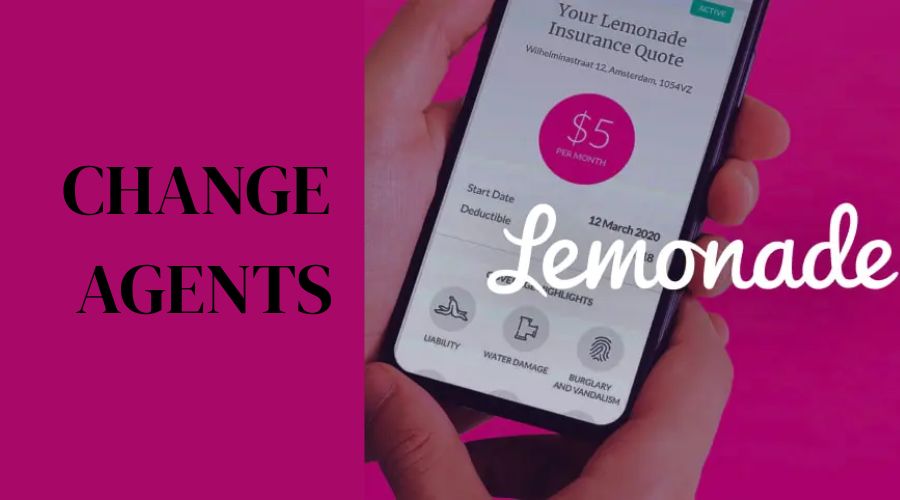In the fascinating field of insurance, “lifetime value” (LTV) is frequently calculated in terms of real lifespan. Individuals usually purchase their first insurance coverage in their 20s, pay premiums well into their 80s, and by midlife, their rates have increased several times.
It can be quite profitable to invest in customer acquisition now in exchange for that stream of gross profits in the years and decades to come because that results in an exceptional LTV. At Lemonade, this is encapsulated in the LTV/CAC ratio, which stands for lifetime value to customer acquisition cost. With an LTV/CAC ratio of >3, it typically makes more than $3 in gross profit for every $1 spent on CAC.
Their anticipated internal rate of return (IRR) on the CAC expenditure, adjusted for the time value of money, comes to almost 50%, which is a strong return on investment by any standard. However, the extended insurance timelines have a drawback in that they cause a temporary financial crunch.
Lemonade takes about 24 months to recoup the initial CAC, and during that period, the funds are reserved. To put it another way, a dollar spent today to attract a customer won’t be accessible for the next consumer for two years.
Growth is hampered by this limitation, which is referred to as the cash flow gap. Because many of those potential streams of gross profit will remain unrealized as long as the capital is tied up, even when they perceive possibilities to deploy capital at a strong internal rate of return. To put it another way, having to give up a lucrative business due to the cash flow mismatch lowers the terminal value.
Many software businesses sold shares to close the cash flow gap during the era of exuberant stock valuations. For a while, that made sense, but that time is over, and stock isn’t a scalable source of operating capital anyway.
Insurance Agents

Independent agents are usually used to fill the cash flow gap in traditional insurance. Many people use their insurance agent for a variety of reasons, and the majority of them respect the value their agent brings, especially those who are wary of self-serve technologies.
Agents provide value in a variety of ways from the insurance company’s point of view as well; however, funding the insurer’s CAC continues to be a major draw. In exchange for funding the upfront CAC, the agents receive a commission (often 10–20% of the premiums) that allows them to participate in the LTV. The commissions are paid for the duration of the customer’s life and are also applied to all of their future transactions.
Although there is a role for agents in Lemonade’s operations, mainly to reach clients that are unable to enroll through digital means, the vast bulk of the business will still be conducted directly with customers.
Why? For starters, the agent-mediated business commodifies the brand and dilutes the data obtained by substituting the agents’ interface for the enchanted Lemonade experience. Additionally, the agents significantly lower the customer’s lifetime value (LTV) by siphoning off up to half of the customer’s gross profit.
Agents make sense for businesses that are unable to be contacted through other channels; they are accretive when they do not cannibalize. However, it is better off go directly to customers who can contact them on their own. There are different ways to close that damned cash flow gap.
Synthetic Agents

The benefits of dealing with agents led them to consider the possibility that they could design a financial structure that would provide the cash flow benefits of agents without any of their disadvantages. Is it feasible to have someone else finance the CAC while maintaining complete ownership of the client? Can it shorten the payback period and enable capital-light expansion without forfeiting half of the gross profit throughout the customer’s lifetime?
They have found a way to achieve just that by creating what’s called synthetic agents. They developed synthetic agents in collaboration with General Catalyst (GC), a prominent technology investor and an early backer of Lemonade. Businesses across a range of industries have benefited from GC’s customer value strategy in recent years by having fewer cash flow issues. They have proven to be an ideal launch partner for the Synthetic Agents initiative.
Let’s begin by discussing the program’s mechanics:
- Up to 80% of the CAC cost in any given month will be financed by the Synthetic Agents (GC) (Synthetic Agents’ cost), and they will only get a “commission” of up to 16% from the premiums paid by the corresponding cohort, or all of the new members of Lemonade that month.
- The stream of synthetic “commissions” from any one cohort will add up to the Synthetic Agents’ spend on that cohort, plus a fixed return of sixteen percent internal rate of return after about two to three years. Following the attainment of that maximum return, the cohort’s “commissions” end, and Lemonade is the sole beneficiary of all subsequent premium accruals.
- In contrast, the synthetic agents will bear the entire loss and have no legal recourse against other cohorts or Lemonade in general if, for whatever reason, the flow of “commissions” stops before they recoup their investment.
Two significant similarities exist between synthetic and garden-variety agents:
- Lemonade’s CAC payback time is shattered by synthetic agents, allowing it to expand quickly without using up the financial reserves.
- The exposure to “commissions,” or Lemonade’s customer lifetime value, is the only reason why synthetic agents are acting in this way. No encumbrances, liens, or restrictive covenants are being placed on Lemonade by GC, nor are they getting equity or warrants. The only source of their returns is the cohorts they introduced to Lemonade, from whom they have a contractual right to get the equivalent of a commission, just like their human counterparts.
The resemblance to the conventional agency paradigm ends with those strong benefits. In contrast to the typical conditions of an agency agreement, with synthetic agents:
- The client has a direct, complete, and exclusive relationship with Lemonade. After viewing the advertisements, the consumer visits the app or website and enjoys the entire Lemonade experience without any outside intervention.
- It does not have a lifelong partnership with the synthetic agent. Their “commission” ends after two to three years, at which point Lemonade receives the full LTV of the clients. The partners in financing the CAC are synthetic agents; they do not “own” their clients.
It is believed that synthetic agents will change the game for Lemonade. Going forward, it can increase growth without depleting the capital reserves or selling additional stock. It can also create a much bigger company much faster, with more money in the bank and a considerably higher return on capital. That’s quite a bit. Indeed, it is predicted that the CAC’s IRR will increase to about 90% as a result of the synthetic agents!
They wouldn’t want it any other way because the application works well for the synthetic agents as well. In contrast to traditional insurance agents, synthetic agents operate solely for financial gain and have no overhead, client interaction, or license requirements.
Lemonade’s retention triangles are exceptionally steady and predictive, and the insurance industry has a high retention rate. These serve as the foundation for the sole underwriting Synthetic Agents do, which is to ensure that the stream of premiums they are funding will last long enough to pay for itself and then some. Using the Synthetic Agents constellation to invest in Lemonade carries some risk, but it is little and well worth it.
One of the advantages of the Synthetic Agents program is that it is win-win. It indicates that the program can grow and last.
The parties plan for this framework to evolve, renew, and expand in tandem with their growing business, even though the original agreement gives access to $150 million in committed CAC financing over the next 18 months. To put it briefly, synthetic agents offer the kind of strong capital structure that will enable the implementation of ambitious expansion goals for the future.
Change Agents

It has been broadcasting lately that they’re intentionally reducing growth, so discussing “ambitious future growth plans” might seem a little off-kilter to the regular listeners.
Let’s examine that.
Two offenders were implicated in the recent contacts regarding growth moderation. The first was the high rate of inflation and how it affected business profitability. It is stated in the Q1’22 Shareholder Letter that “we have filed 100 applications for rate changes over the past year” in response to the statement that “claims are instantly adjusted for inflation, while premium rates take months to adjust.”
Furthermore, they pointed out in the Letter for Q4 of 2022 that “rate approvals—in certain states and products more than others—have not kept pace with inflationary pressures,” despite their substantial rate filings. They currently anticipate overall annual IFP growth of about 11–12% due to the decision to exclude such areas from the expansion plans, but when the rates come online, they’ll try to catch up to the multi-year target of 20–25%.
The mismatch between rates and risk caused by inflation cannot be resolved by synthetic agents. Fortunately, however, they are finally witnessing the approval, implementation, and start of earning in of several of the rate submissions, and the best estimate is that they will be able to pick up the growth rates with loss ratios in a few quarters.
This leads to the second factor causing growth to slow down: the high cost of capital. In their letter from Q2 of 2022, they stated that “to ensure we are never forced to raise capital…we have moderated our growth spend” and that “we have seen our cost of capital increase by about one order of magnitude.” Although not at the current cost of capital, they stated that “we can effectively deploy far more capital than this moderated plan will see us deploy.”
It became a common refrain: “Opportunities abound; the cash to pursue them does not.” They translated it as follows in the Q3 22 Letter: “We still think that more rapid expansion will maximize Lemonade’s net present value. However, we are purposefully slowing down to reach our “optimal cash burn” velocity, which we estimate to be between 20 and 25 percent annual growth, given the high cost of capital today.”
While synthetic agents may not be able to stop inflation, they are quite effective at maximizing cash burn. They discussed at the November ’22 Investor Day why they think a 20% compound annual growth rate (CAGR) is ideal for achieving profitability with current cash and why it would be better to slow to a 12% CAGR if inflation keeps high loss ratios from going down (which is exactly what happened).
Strategic context for Synthetic Agents
Three pillars support the strategy for the upcoming years:
- Expense Ratio: As the quality of service (precision, consistency, and speed) improves, AI uses the digital infrastructure to automate more and more of the business activities, lowering the cost load.
- Loss Ratio: By utilizing machine learning, they can better match risk to rate by leveraging the data edge, which includes quantity, quality, and usability.
- Expansion: By reducing the capital drag, quota share reinsurance, and synthetic agents streamline the operations for effective expansion.
Each of these three reinforces the others. The digital infrastructure creates the training data for the machine learning, which lowers the loss ratio, in addition to enabling automation, which lowers the expense ratio.
The synthetic agents and quota share partners benefit from the resulting improvements in unit economics, which reduce the capital burden and enable lean growth. Growth increases the denominator of the expense ratio, while automation maintains a relatively constant numerator, which lowers the expense ratio and increases the net profit. As a result, the company expands in size, accuracy, efficiency, and profitability with each flywheel revolution.
Lemonade was created with scale in mind. They anticipate that expansion will be the gift that keeps giving and that the strength of the business model will show itself as rising profitability as they expand.
However, in their most basic form, the capital costs of insurance—both working capital and regulatory capital—would impede the progress, cause cash to sit idle, and postpone profitability. That’s why having partners with business models that complement is so important. Through the quota share program, the reinsurance partners alleviate the regulatory capital load, and through the Synthetic Agents program, General Catalyst alleviates its working capital burden.
Lemonade needs to grow to reach its full potential, and fortunately, they have lots of space to do so. State Farm would still be 10 times the size if it were to grow ten times the business, and AXA would still be 100 times larger even if they were to grow 100 times.
Conclusion
According to that viewpoint, the Synthetic Agents program is situated within its appropriate and wider context. The cash flow cycles will be significantly accelerated by synthetic agents, in their opinion, and those supercharged revolutions are the key to reaching scale sooner and with more fuel left in the tank. That’s their plan, to put it briefly.
Want to join in? Visit us.
FAQs
Q1. What distinguishes Lemonade’s business strategy from that of a conventional insurance provider?
Ans: Conventional insurance firms make money on the remaining premium after covering claims and costs. There may be disputes between the insurance firm and its clients as a result of this business strategy.
Lemonade was constructed in a distinct way. They take a fixed fee out of your premium as our profit rather than making money off of unclaimed premiums. Any money that remains after claims and expenses are paid to charities is known as the Lemonade Giveback.
The clients benefit from fantastic insurance in this way, and society is little improved. It also indicates that we are pleased to settle claims quickly and without any difficulties.
Q2. What are you doing with my premium money?
Lemonade retains a predetermined portion of the premiums we receive. This covers the cost of creating a ton of innovative technology, managing an insurance business (including payroll, rent, and other expenses), and hopefully turning a profit! Our need to pay claims does not conflict with our goal for profit because it is a fixed fee.
This is how it operates:
As a fully authorized and regulated insurance provider, Lemonade manages and pays claims in addition to underwriting, pricing, and selling products.
All premiums paid by our clients are subject to a flat fee, with the remaining funds being used for business operations, claims processing, and reinsurance payments. We contribute any remaining funds to charitable organizations. As a result, unlike traditional insurance companies, we have no incentive to reject claims because we will never keep the money that is left over.
Q4. How can I obtain insurance for Lemonade?
Ans: Lemonade policies are mostly offered for sale online via our mobile apps or website. To manage their insurance, submit claims, and receive assistance from our team, customers must download the app.
Q3. What is the structure of Lemonade?
Ans: Listed on the New York Stock Exchange, Lemonade, Inc. is a publicly traded company that was set up as a public benefit corporation under Delaware law. The parent firm of a number of subsidiary businesses is Lemonade Inc.
Q5. Which policies does Lemonade provide?
Ans: At the moment, we provide homeowners, renters, condo, co-op, auto, life, and pet health insurance.
We’re always developing intriguing new features and products. To receive alerts on new content as it becomes available, we suggest following us on Twitter.











